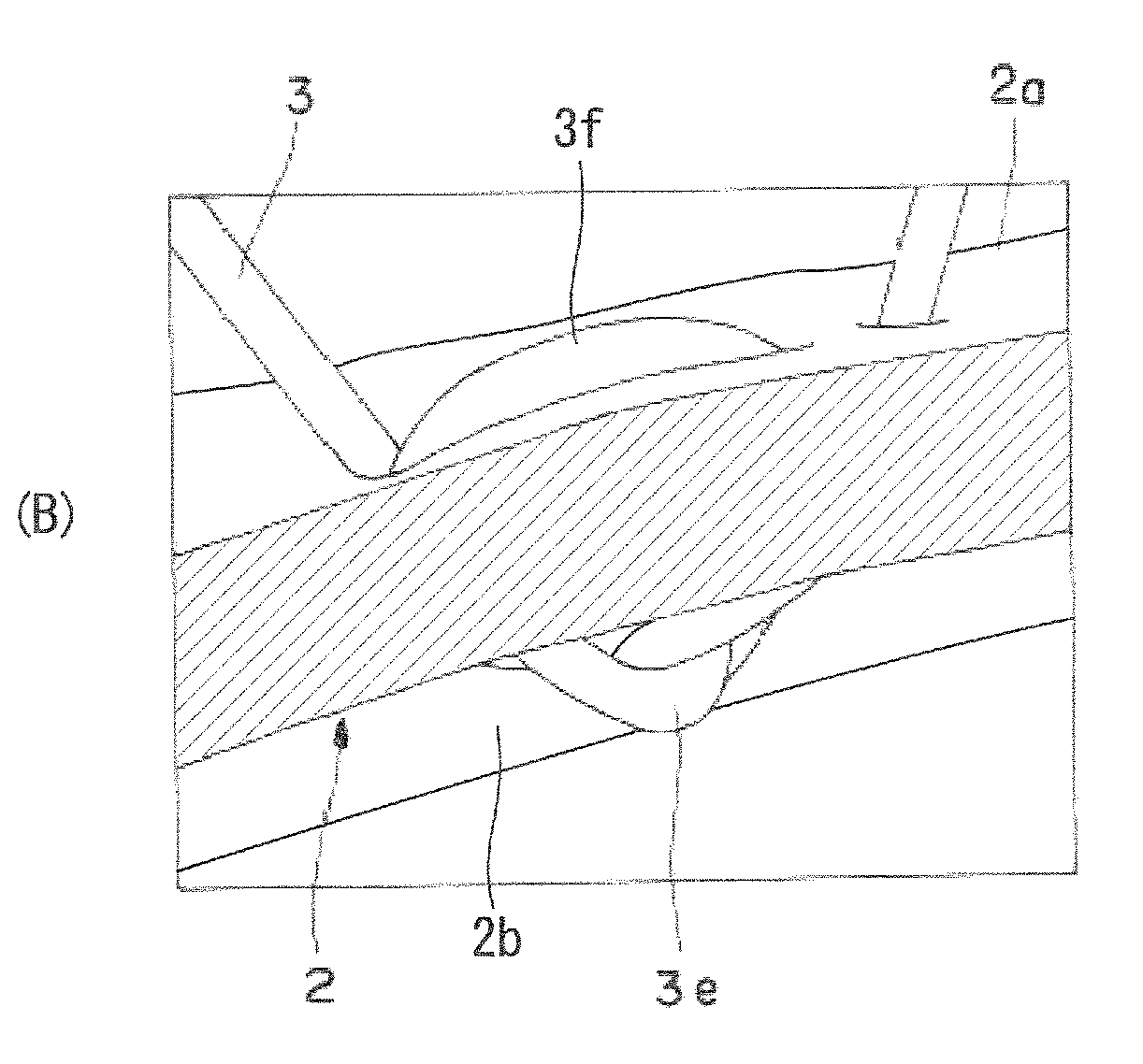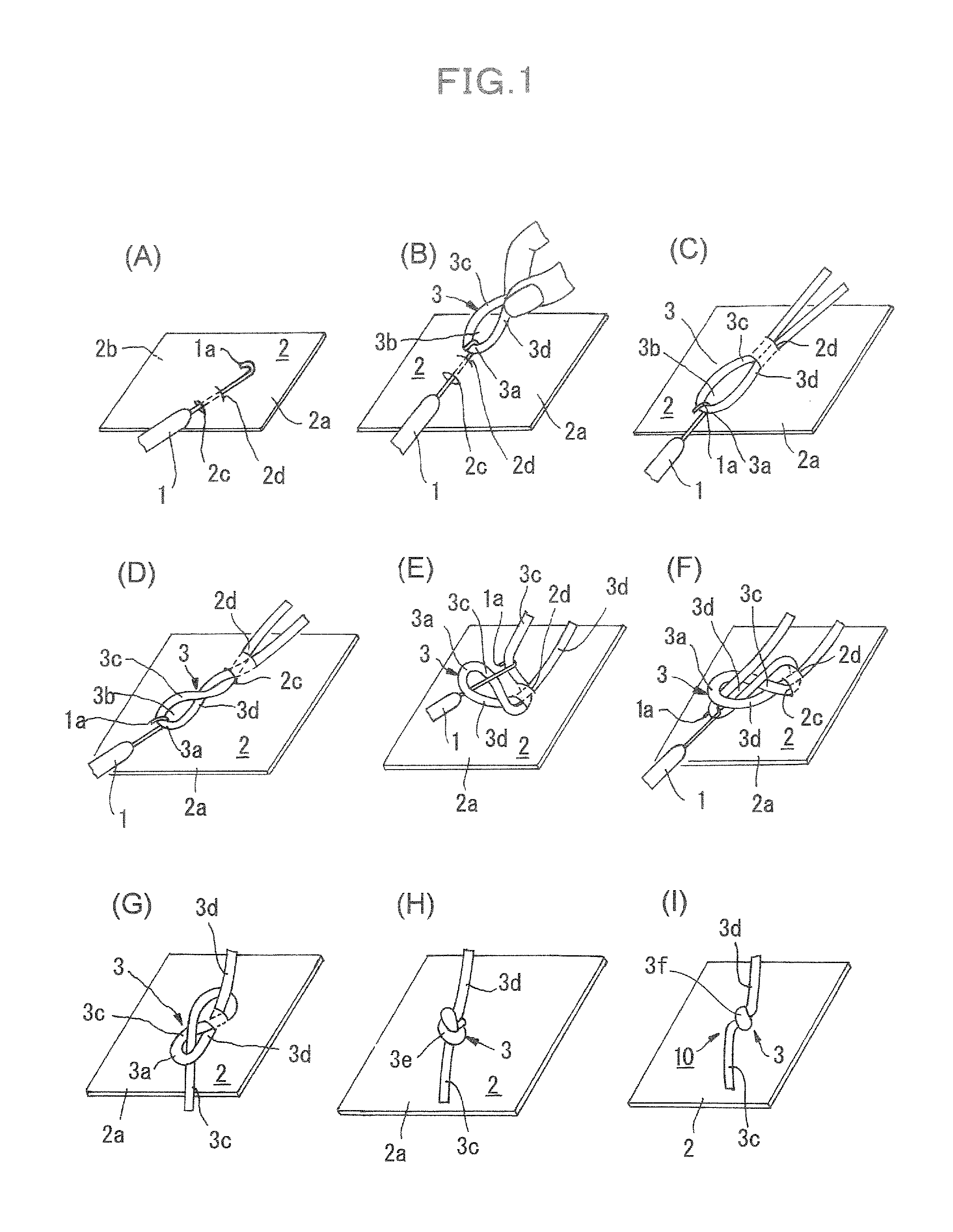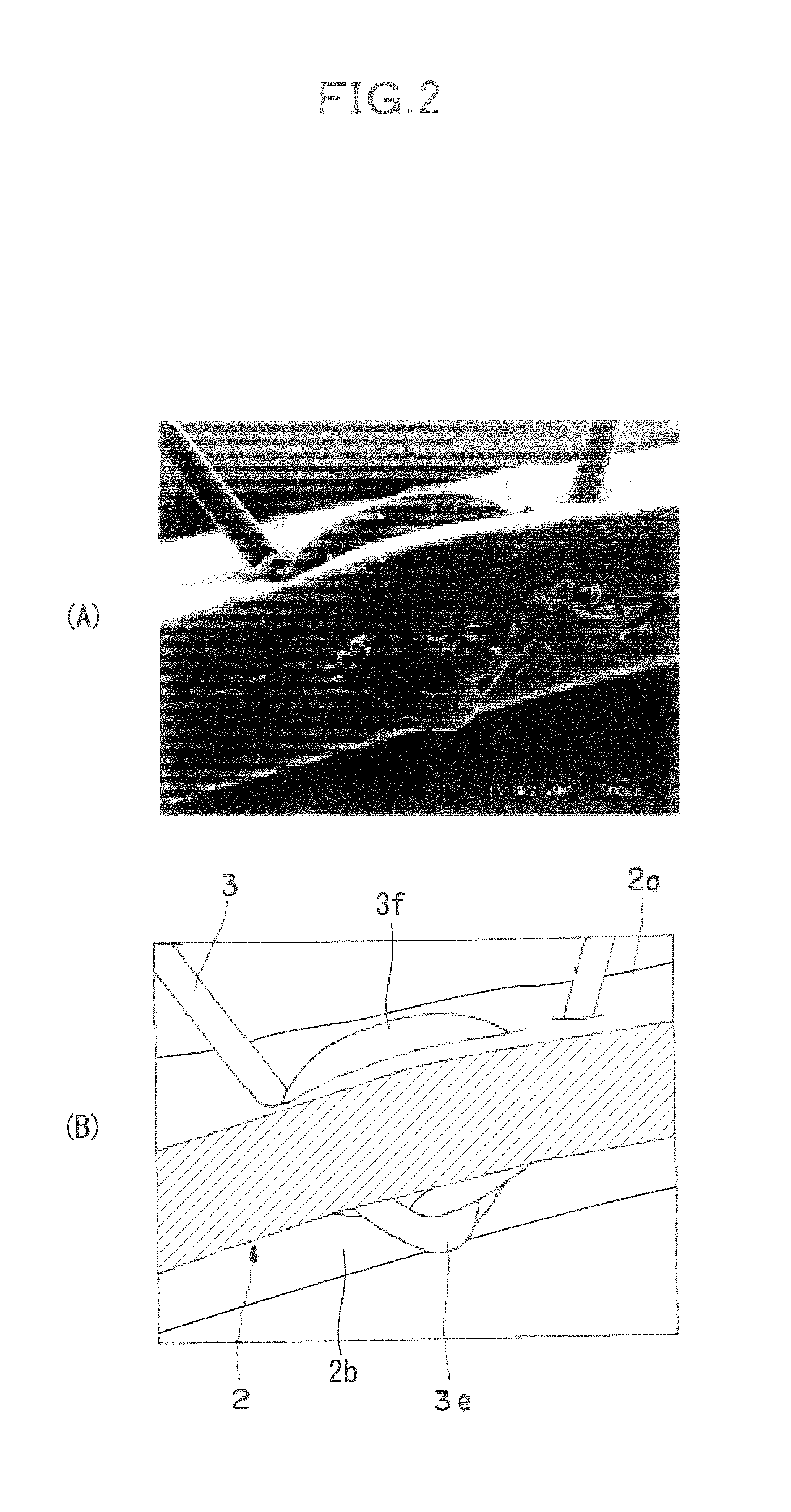Wig and its manufacturing method
a manufacturing method and technology for wigs, applied in the field of wigs, can solve the problems of wig hair coming off, hair erection, hair hammering, etc., and achieve the effects of preventing knot loosening, minimizing the load on the implanted hair, and facilitating erection of hair
- Summary
- Abstract
- Description
- Claims
- Application Information
AI Technical Summary
Benefits of technology
Problems solved by technology
Method used
Image
Examples
example 1
Example 1
[0060]As example 1, a wig was produced by the method in the form of implementation described above. Soft 0.20 mm-thick artificial skin made of a polyurethane resin was used as a wig base, and a number of 0.08 mm-thick artificial hairs made of a polyamide resin were implanted. FIG. 2, FIG. 3, and FIG. 4 are cross-sectional views showing the implanted hair of the wig, viewed at an oblique angle from above, at an oblique angle from underneath, and from the bottom respectively. (A) of FIG. 2, FIG. 3, and FIG. 4 is a scanning electron microscopic image taken at 90-, 80-, and 80-fold magnification respectively. (B) is a figure for describing the members. It is apparent from these figures that the knot 3e of the wig of the example is on the back 2b of the wig base 2, and the bridging portion 3f linked to the knot 3e is on the surface 2a.
PUM
 Login to View More
Login to View More Abstract
Description
Claims
Application Information
 Login to View More
Login to View More - R&D
- Intellectual Property
- Life Sciences
- Materials
- Tech Scout
- Unparalleled Data Quality
- Higher Quality Content
- 60% Fewer Hallucinations
Browse by: Latest US Patents, China's latest patents, Technical Efficacy Thesaurus, Application Domain, Technology Topic, Popular Technical Reports.
© 2025 PatSnap. All rights reserved.Legal|Privacy policy|Modern Slavery Act Transparency Statement|Sitemap|About US| Contact US: help@patsnap.com



